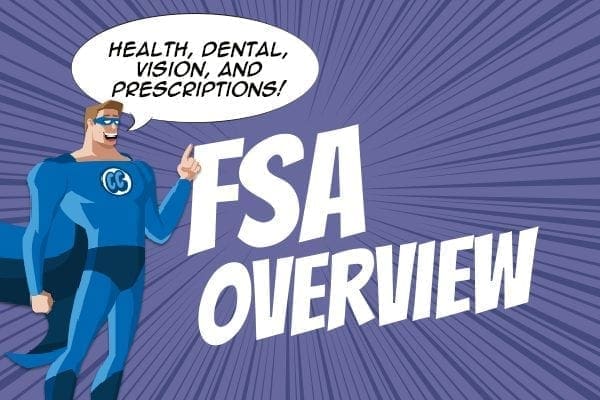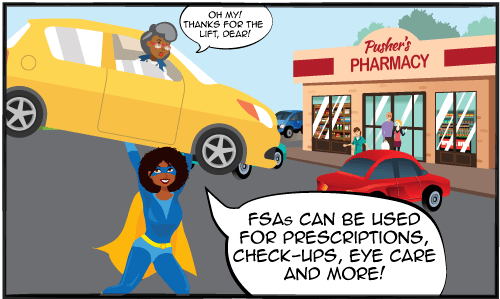

Flexible Spending Accounts (FSAs) - An Overview
A Flexible Spending Accounts (FSA) lets employees put aside money each pay day to pay for healthcare costs. The money put into the account is not taxed. An FSA can be used by the employee for themselves and their dependents (spouse/children).
FSA Contribution Limits
In 2025, participants may choose to set aside up to $3,300 in their FSA.
Tax Savings
You do not have to pay taxes on the money you put into your flexible spending account. On average, people with an FSA save between 30-40% in taxes on the money put into the account. The savings includes Federal, State, and Local taxes, and Social Security contributions.
Eligible Expenses
Learn about eligible medical expenses or contact your Benefits Representative for more details. Common eligible healthcare expenses include:
- Prescriptions
- Over-the-counter medications
- Copays
- Deductibles
- Eye wear and eye exams
- Dental care

Benefits Debit Card
If you have an FSA benefits card, you can use it at pharmacies, grocery stores, and other approved stores. It can help you cut down on the amount of claims you need to file. Don’t toss your receipts! Your benefits administrator may ask for them to verify a purchase.
Filing a Claim
If you don’t have an FSA benefits card, you will have to file a claim to get reimbursed. Check your benefits administrator’s website for a form. You will need:
- Who the purchase was for
- Receipt or Explanation of Benefits (EOB)
- Date of service/purchase
- Amount
FSA Plan Types
There are three different plan types:
- Use it or Lose it – Spend all your FSA funds by the end of the plan year or lose them
- Carryover – Any unused money, up to $660, can be carried over from one plan year to the next
- Grace Period – Participants get a 2.5 month grace period after the end of the plan year to use any unspent funds
Uniform Coverage Rule
People with a flexible spending account can use the full amount of their annual contribution on the first day of the plan year. It works like an interest-free loan.
For example, you choose to put aside $2,000 annually, and on day one you have a $2,000 medical bill. You can use all of your FSA money to pay for it, even though the money has not built up in the account.
For the rest of the year, you will still have the money deducted at the same rate from each paycheck. However, your available balance will be at zero once all the funds are spent.
You can't keep it ...
Flexible spending accounts are owned by the employer, even though you fund the account. If you leave your company for any reason, the FSA money stays behind.
Share:

FSA Contribution Limits
In 2025, participants may choose to set aside up to $3,300 in their FSA.
